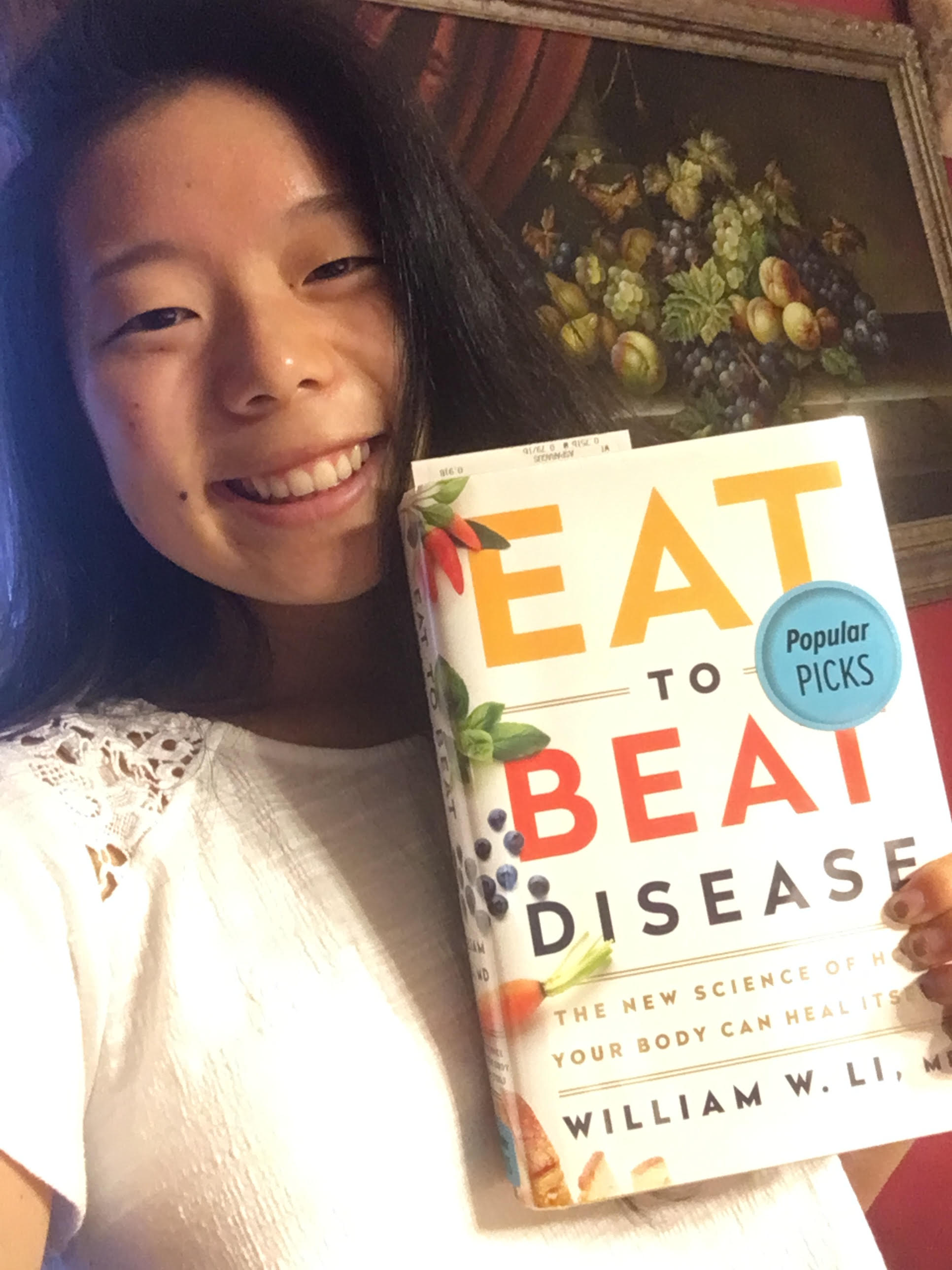Eat to Beat Disease: a MUST READ
Thursday September 5, 2019
The other day I was at the library, looking for a quick read before I head off to school in a week, and I spotted a thick book with color foods on the front titled Eat to Beat Disease. ‘This sounds interesting!’ I thought to myself, and as I was in a hurry to leave, I quickly checked it out. That night, I started reading after dinner and literally could not stop. This book is everything I’ve been looking for! And I’m not exaggerating.

Here it is! My favorite new read
For the longest time, I wanted a resource (a collection of journal articles, podcasts, book, anything!) that explained why some foods are healthy and others aren’t with scientific backing, and this book does it all. It explains why certain foods are good for you beyond the scope of how full it makes you or whether the calories are “worth it”. In fact, I’m currently about halfway through the book, and the author, Dr. William Li, has barely even talked about calories! WAKE UP AMERICA! Calories are not the only measure of health!
As a quick sneak peek, Dr. Li first explains five of the body’s amazing defense mechanisms against diseases including cancer, diabetes, heart disease, and many others that seem to only be treatable by modern medicine. The five mechanisms are summarized as:
- Angiogenesis: building blood vessels to various parts of the body
- Regeneration: using stem cells to repair injuries
- Our gut’s microbiome: the good bacteria living inside of us
- DNA Projection and Repair: affecting expression of certain genes
- Immunity: using our immune system to build resistance against certain diseases/invaders.
Except, read the book for a much more thorough and in depth explanation of the mechanisms; this is barely the tip of the iceberg! Then, Dr. Li goes on to explain which foods affect each of the five mechanisms and guess what! They’re mostly foods that you’re probably already eating! He backs up each food listed with scientific evidence, whether from clinical trials or experiments done in a lab setting, and usually uses more than 1 experiment as an example.
For me personally, before picking up this book, I kind of judged foods on if they were healthy or not based on if they had a lot of fiber and would fill me up while minimizing the number of calories I consumed. However, this is such a black and white scale for a field as colorful as a rainbow, almost literally! There’s so much more to health than just digestion rate. For example, it’s known that cheese is pretty calorie/energy dense and contains quite a bit of saturated fat, so I tended to avoid it as much as I can. However, cheese (especially European cheese) has a lot of probiotics and prebiotics (good bacteria and food for the bacteria in our microbiome, respectively) that will improve our overall health! In moderation, of course, cheese is really beneficial!
I’m already looking at the foods I eat and making a mental note of which defense mechanism I’m improving by eating this, but the list is so long, I’ll definitely have to give Eat to Beat Disease another read to understand more!
As summer turns into Fall and we’re stuck inside anyways, definitely put this on your read list!
Note: it is a little scientifically dense, and while Dr. Li does a great job of explaining it, if a concept is new, don’t be afraid to re-read a part a few times or use Google! I know I definitely did :)
Enjoy!
-Al